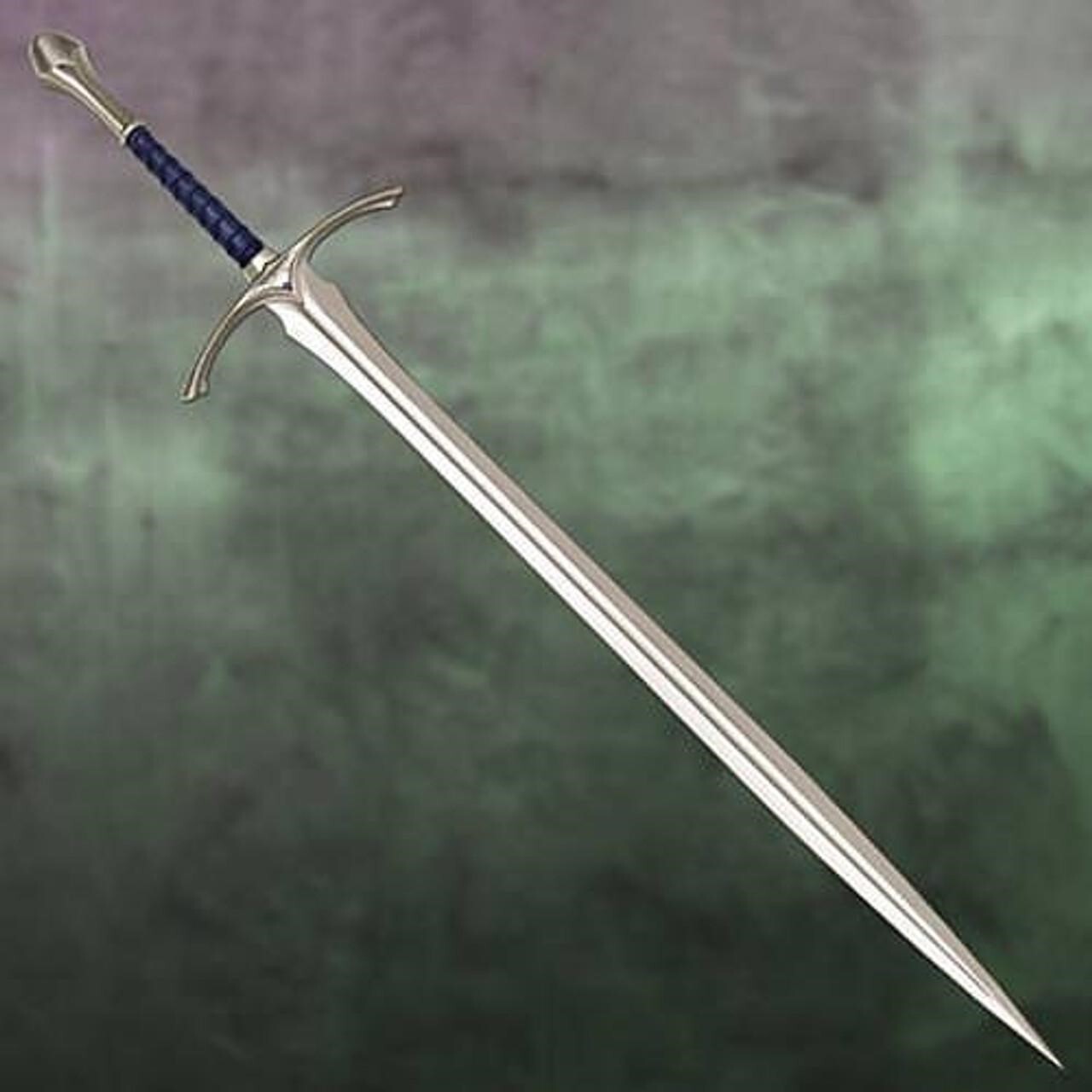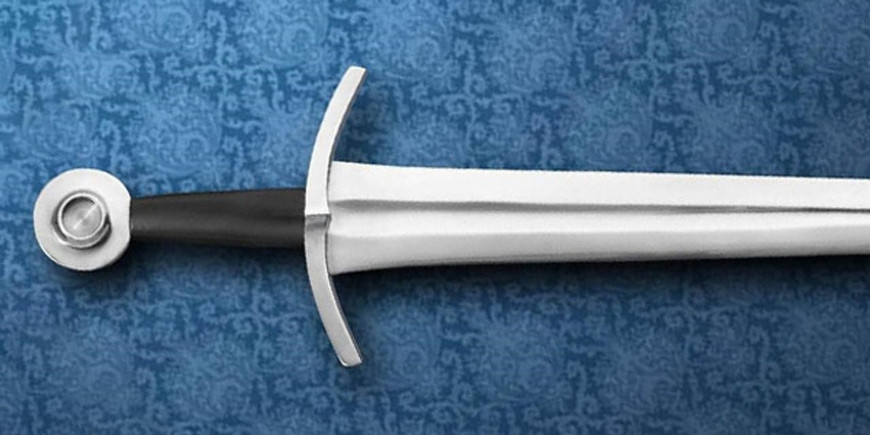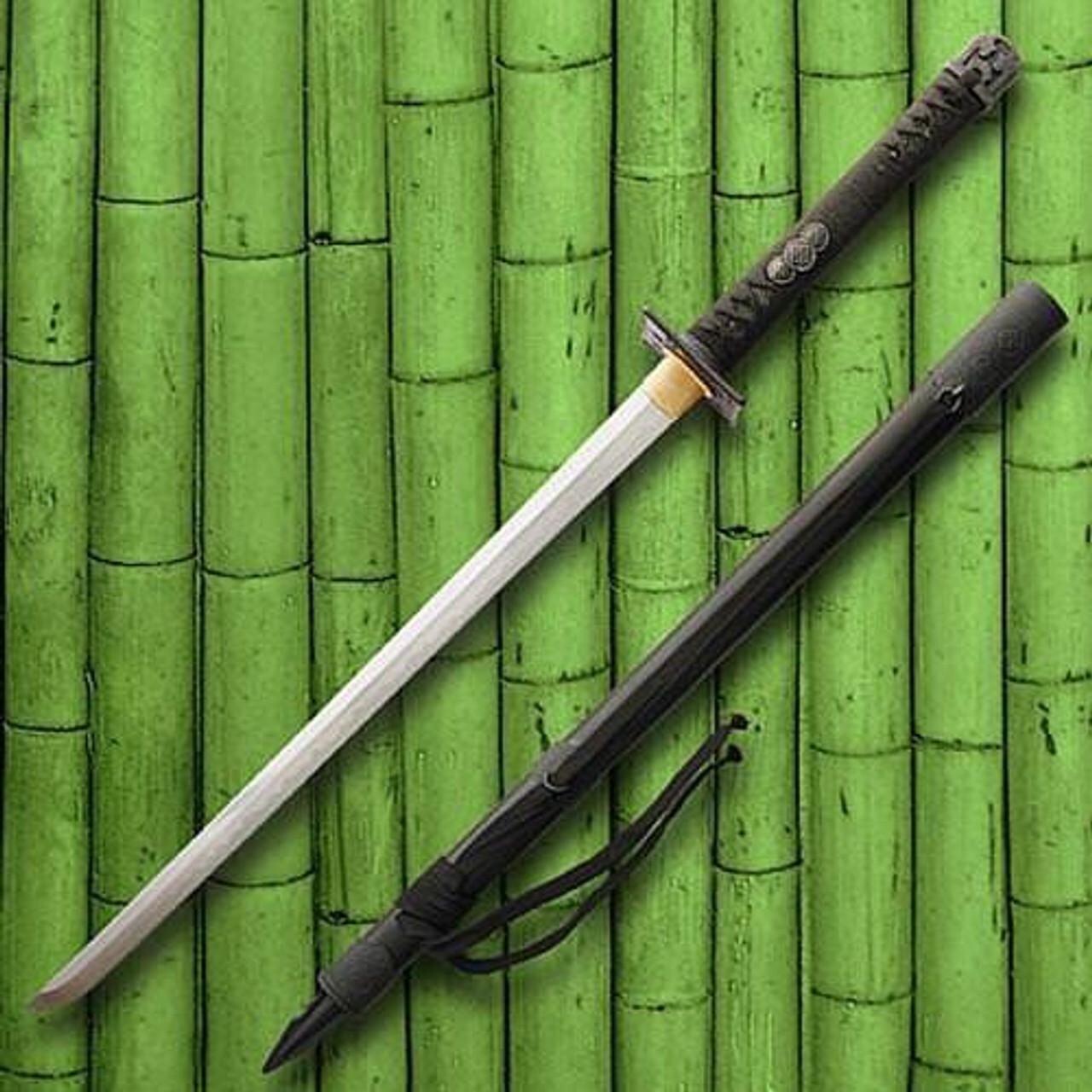The History Behind the Blade: Exploring Iconic Swords Through the Ages
Oct 23rd 2024
Introduction
Have you ever wondered about the history of swords? Whether wielded by medieval knights or ancient samurai, swords have long been seen as symbols of power, honor, and tradition. These blades are etched into our historical consciousness with their iconic designs and unmatched legacy. In this blog, we’ll explore the fascinating history behind some of the most iconic swords through the ages, tracing their origins, cultural significance, and lasting impact on the world.
Historical Overview
Origins
The earliest swords, made of copper and bronze, date back over 4,000 years to ancient Mesopotamia and Egypt. These early blades were shorter and primarily used in close combat. Swords became longer and more robust as metalworking advanced, with iron and steel eventually replacing bronze. The sword's evolution mirrored the rise of powerful civilizations, each culture developing its unique blade to reflect its needs, from Rome's straight-edged swords to the Middle East's curved scimitars.
Cultural Impact
Throughout history, swords have been far more than tools of war—they were cultural icons. In medieval Europe, the sword represented chivalry and the code of honor that knights lived by. In Japan, the katana was more than just a weapon for the samurai; it symbolized the warrior's soul and discipline. Meanwhile, in the Islamic world, the curved scimitar became a potent symbol of both military prowess and spiritual fervor, often depicted in Islamic art and literature. Swords were also present in coronation ceremonies, political treaties, and duels, solidifying their place in society.
Notable Uses
Excalibur: The legendary sword of King Arthur, symbolizing divine kingship and the right to rule.
The Sword of Goujian: An ancient Chinese bronze sword renowned for its pristine condition after 2,000 years and legendary craftsmanship.
The Katana: Used by samurai in feudal Japan, the katana remains one of the most revered swords in history due to its precise design and connection to bushido, the way of the warrior.
The Roman Gladius: Carried by Roman legionaries, this short sword helped shape the Roman Empire and was pivotal in conquests across Europe and the Mediterranean.
Design and Characteristics
Description
The sword is a versatile weapon, typically featuring a blade with one or two sharp edges and a hilt for the user to grip. It comes in various shapes and sizes, depending on its cultural and practical use. Some swords, like the Roman gladius, were short and designed for thrusting in close combat , while others, like the medieval longsword, were longer and meant for slashing and cutting . A sword's curvature, weight, and balance often determine its use and effectiveness in battle.
Material and Craftsmanship
Swords were traditionally made from metals like bronze, iron, and eventually steel, with each material improving strength and durability. The craftsmanship behind swords, especially in cultures like Japan, where katana forging became a high art, required exceptional skill. Japanese smiths would fold steel multiple times to create a strong yet flexible blade. European blacksmiths, particularly during the medieval period, used pattern welding to combine different types of steel for added strength and aesthetic beauty. Ornate swords might feature gold, silver, or gemstone inlays, making them functional weapons and works of art.
Variations
Swords come in many forms, reflecting the needs and aesthetics of different cultures:
- Katana: A curved, single-edged sword used by Japanese samurai, known for its sharpness and the precision required in its use.
- Longsword: A two-handed, straight-edged sword used in medieval Europe, often associated with knights and chivalric battles.
- Gladius: A short sword used by Roman foot soldiers, effective for thrusting in close combat.
- Scimitar: A curved, single-edged sword used in the Middle East, designed for slashing and often seen in cavalry warfare.
- Rapier: A long, thin sword favored in Renaissance Europe, known for its precision and effectiveness in dueling.
Functionality and Usage
 The Freedom Fighter Early Scottish Claymore
The Freedom Fighter Early Scottish Claymore
Primary Use
Swords were designed primarily for combat, but their specific function varied depending on the blade's design and cultural context. Some swords were meant for slicing and cutting, like the katana or scimitar, while others were used more for thrusting and stabbing, like the gladius or rapier. In addition to their use in warfare, swords also played roles in rituals, ceremonies, and status symbols.
Techniques
Swordsmanship evolved into an art form in many cultures. For example, in Japan, the way of the sword (kenjutsu) involved precise, fluid movements meant to deliver swift and fatal blows. European knights trained in fencing and hand-to-hand combat, where both the sword and shield were used in tandem. The rapier, used primarily for dueling in Renaissance Europe, required agility, precision, and finesse. The techniques associated with each sword were highly specialized and often taught in schools or passed down through generations of warriors.
Advantages and Disadvantages
Advantages
- Versatility: Swords can be used for both offense and defense in combat.
- Symbolism: Swords carried cultural and spiritual significance beyond their battlefield utility, embodying the warrior ethos.
- Craftsmanship: Many swords were crafted with exceptional skill, making them durable and beautiful.
Disadvantages
- Maintenance: Swords require regular upkeep, including sharpening and cleaning.
- Limited Range:: Swords are close-combat weapons, making them less effective against opponents using longer-range arms like spears or bows.
- Skill Dependency: Effective sword use requires years of training, particularly with more specialized blades like the rapier or katana.
Cultural and Symbolic Significance
Symbolism
Swords have always been rich in symbolism. In medieval Europe, swords symbolized the knight's honor, courage, and divine right to protect the weak. The Japanese katana represented a samurai's soul, with its crafting embodying the principles of discipline, loyalty, and martial skill. Across cultures, swords often took on spiritual meaning, representing justice, truth, and the warrior's journey.
Cultural Legacy
The legacy of iconic swords continues to this day. In Western traditions, swords are often viewed as relics of chivalry and nobility, with many modern-day reenactments, films, and literature featuring these blades as central objects of power and valor. In Japan, the katana remains a national treasure, revered for its craftsmanship and role in its history. Sword-fighting techniques, whether in fencing or kendo, are still practiced in sports and martial arts worldwide.
Modern Relevance
 Hobbit Glamdring the Sword of Gandalf
Hobbit Glamdring the Sword of Gandalf
Collecting
Swords are popular among collectors for their historical and aesthetic value. Antique swords, especially those with unique craftsmanship or historical significance, can fetch high prices at auctions. Collectors also appreciate modern recreations of famous blades, whether they are exact replicas of historical swords or fantasy-inspired designs.
Recreational Use
Swordsmanship is still practiced today in sports and martial arts. Fencing, kendo, and HEMA (Historical European Martial Arts) all involve sword-based techniques. Many historical reenactment groups also incorporate swords into their displays, recreating famous battles or duels with historically accurate weapons and techniques.
Pop Culture
Swords continue to capture the imagination in pop culture. Swords remain iconic symbols of heroism and adventure, from the lightsaber in Star Wars to Andúril in The Lord of the Rings. Television shows like Game of Thrones and movies like Gladiator have reinvigorated public interest in historical and fantasy swords, ensuring their legacy remains strong.
Conclusion
Swords have long captivated the human imagination, serving as weapons of war and symbols of honor, tradition, and power. From the katana's intricate craftsmanship to the Roman gladius's brutal efficiency, each blade carries a story, reflecting the values and needs of the culture that created it. Swords continue to fascinate us, whether through collecting, martial arts, or their ever-present role in modern media.
If you want to learn more about the history behind iconic swords, check out our History of The Longquan Sword blog. Looking to expand or start your own collection? Dive deeper into this rich world where craftsmanship, culture, and combat meet at Museum Replicas.






